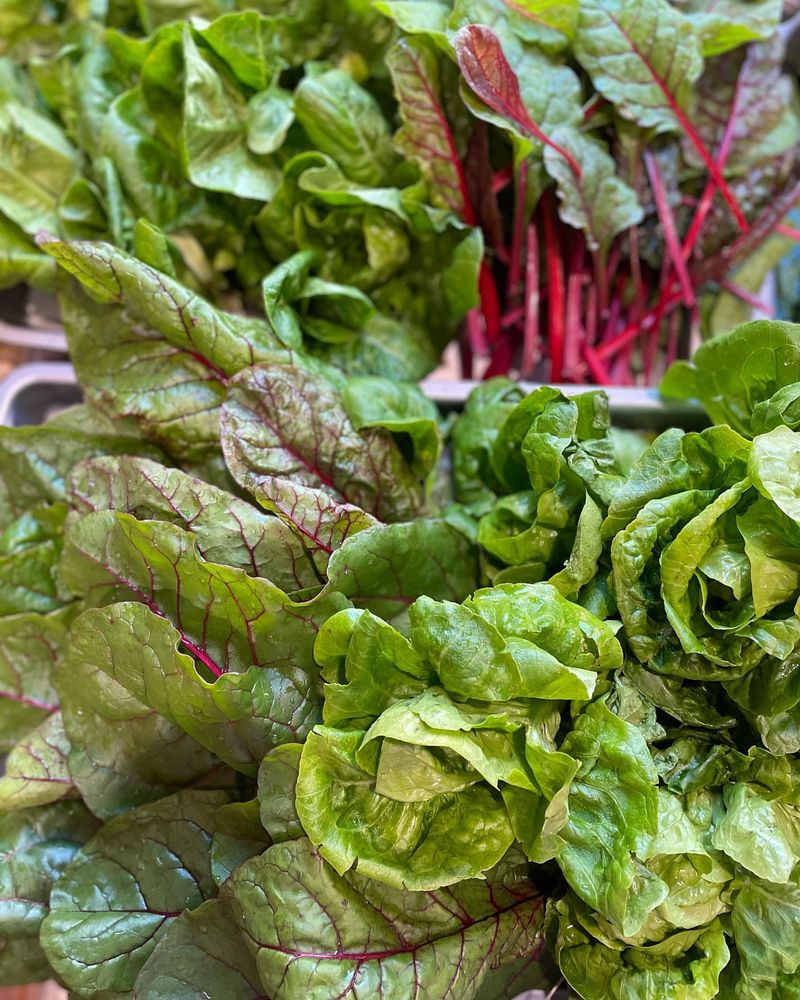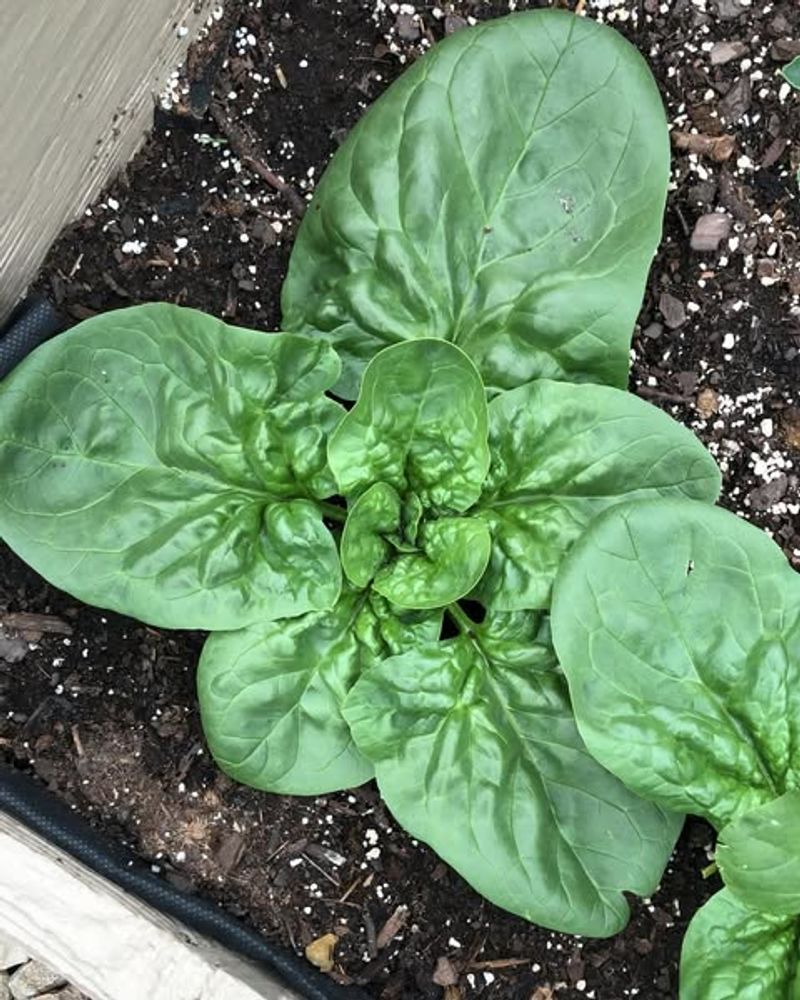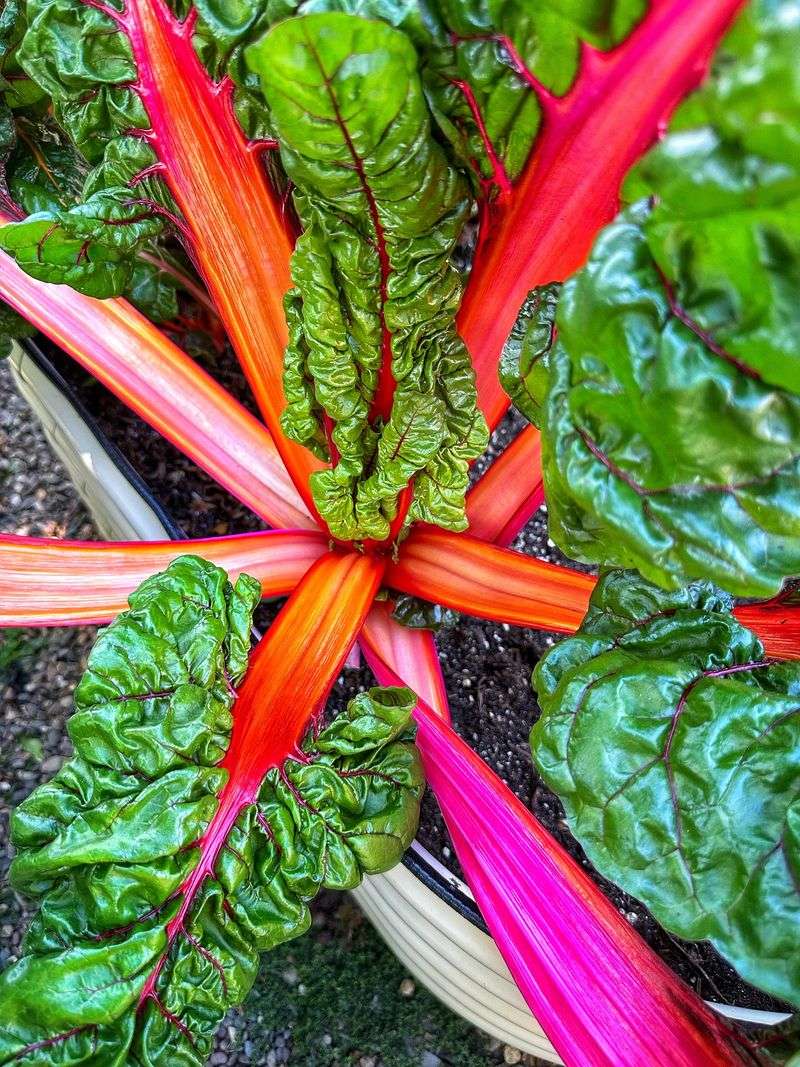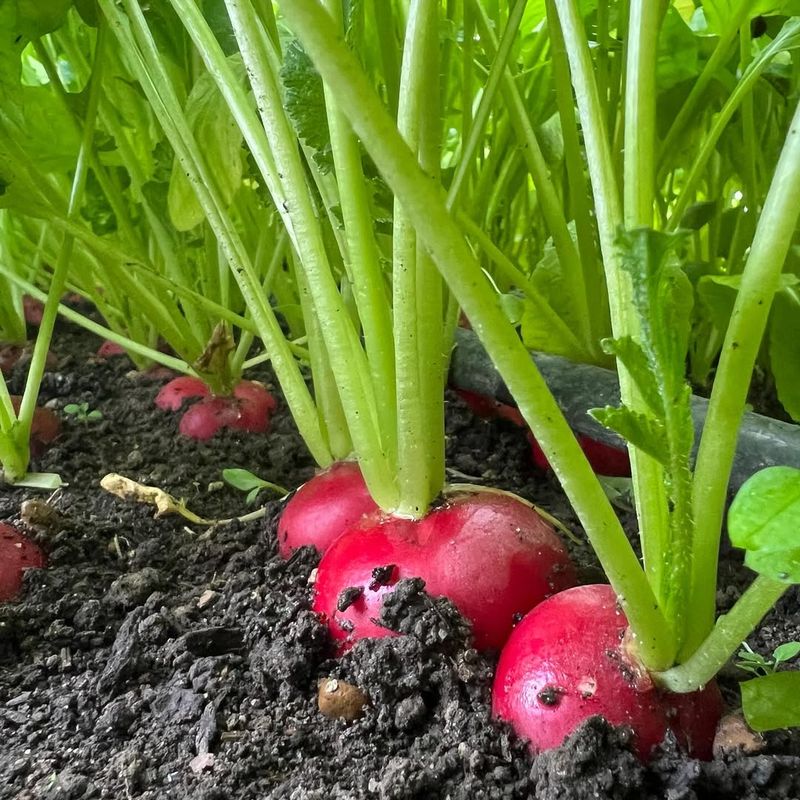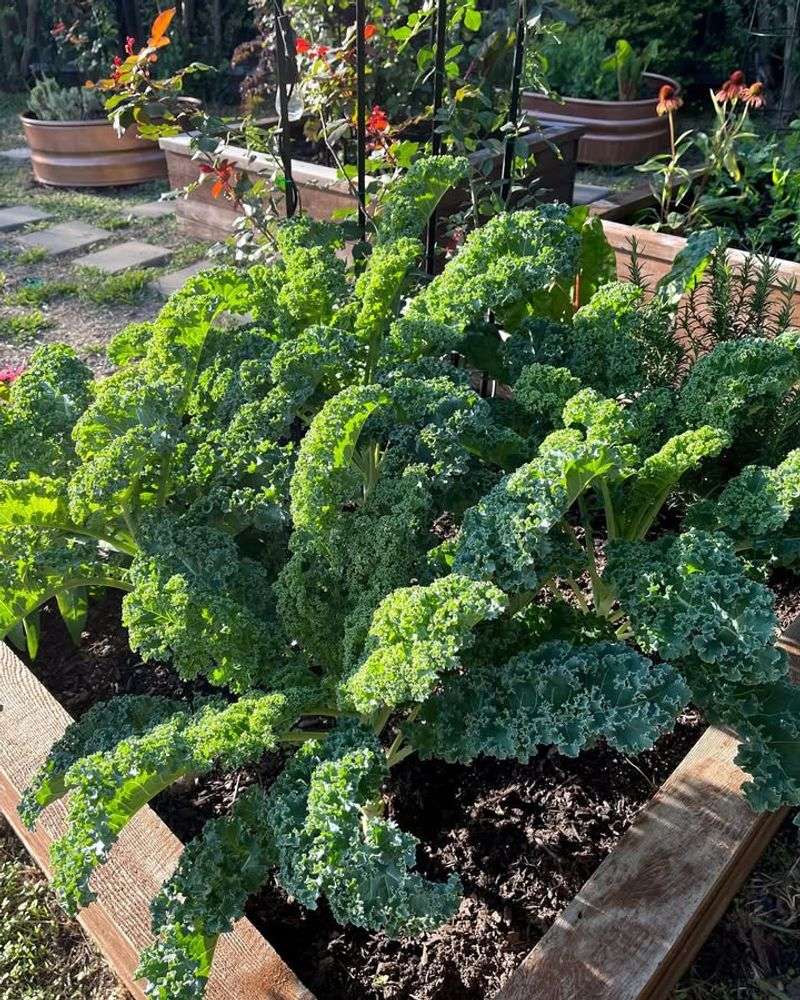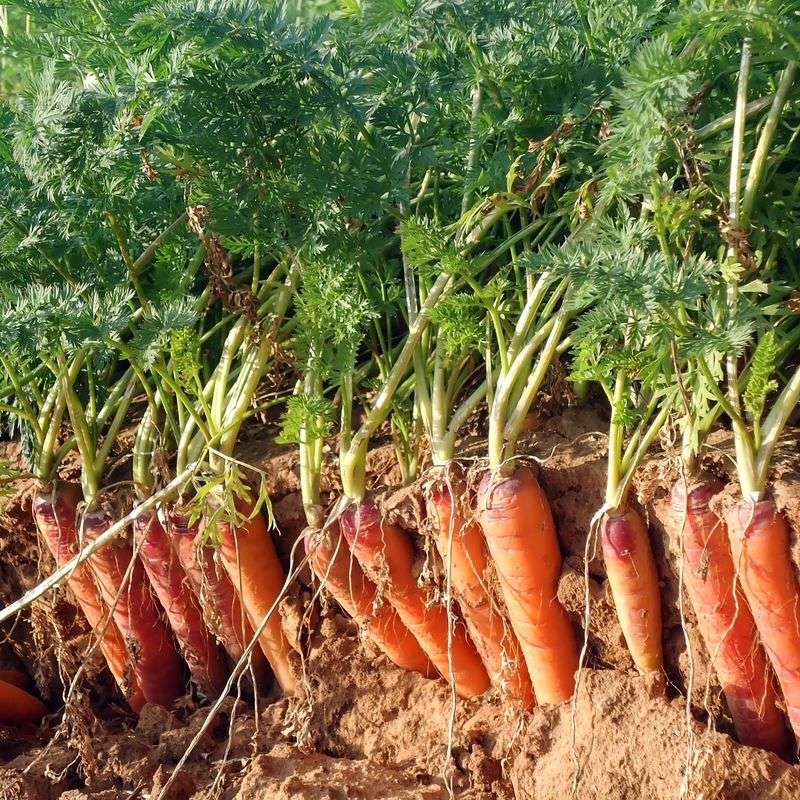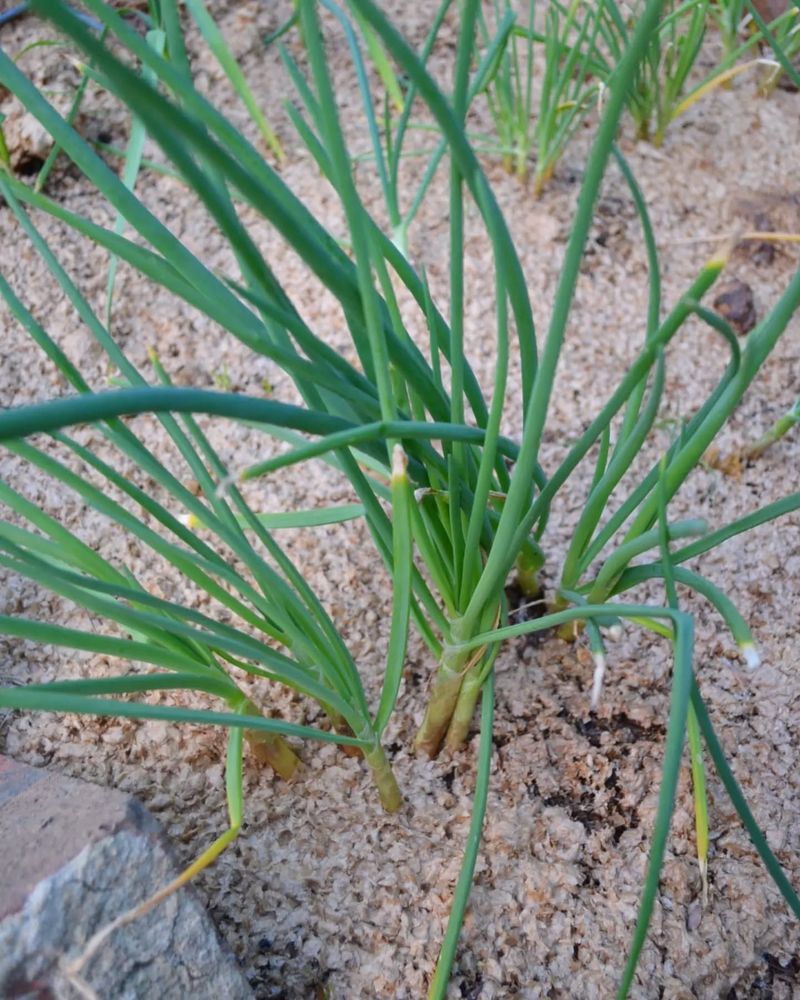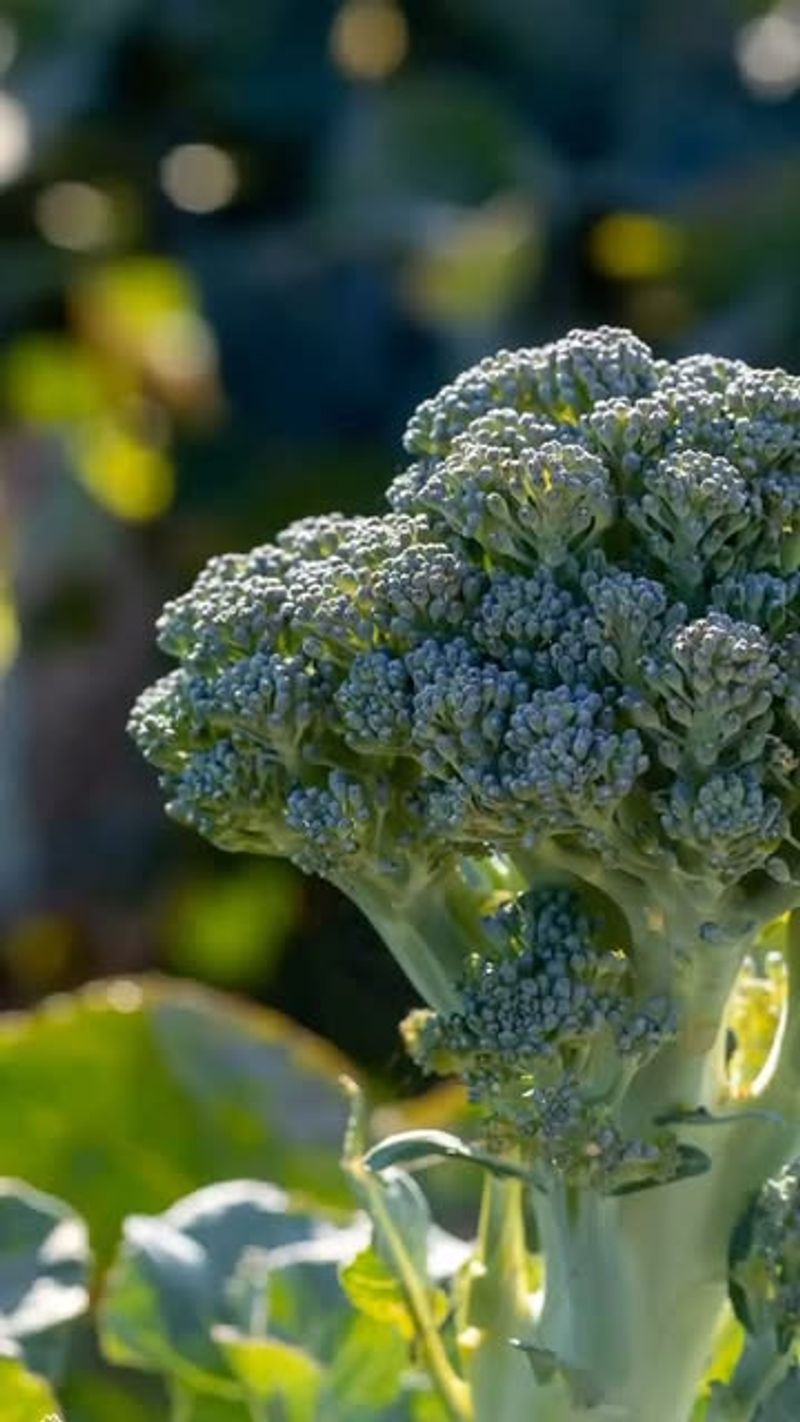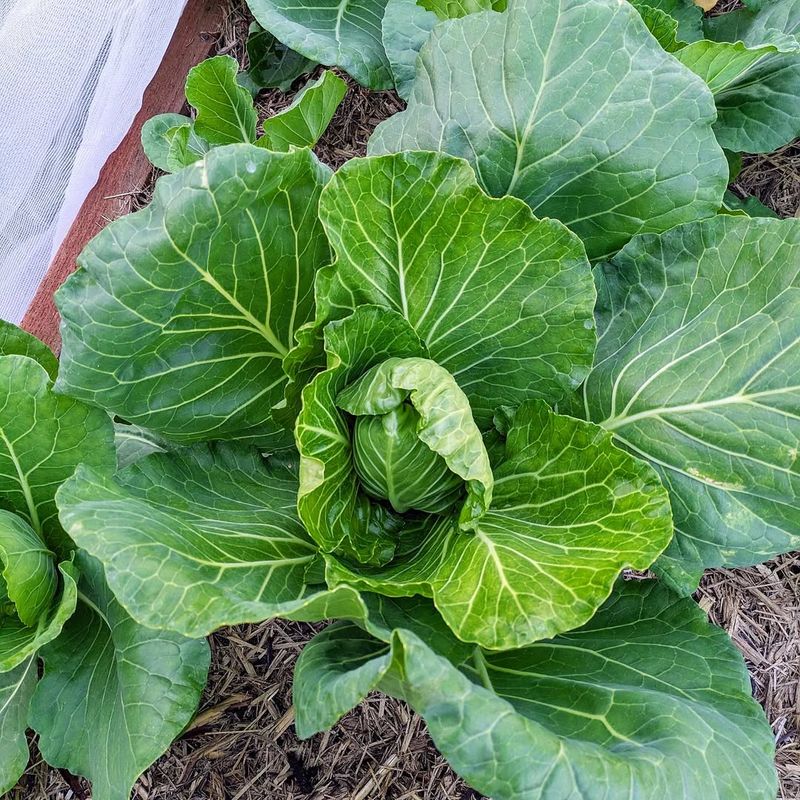November might seem like an odd time to start planting, but California gardeners know better. The mild winter climate makes it perfect for growing cool-season vegetables that will reward you with fresh harvests throughout the colder months and into spring.
Getting these crops in the ground now means you’ll have homegrown produce when most other gardens sit empty.
1. Leafy Greens Like Lettuce
Crisp, homegrown lettuce tastes nothing like the store-bought stuff. November planting gives you tender leaves by late winter, and lettuce actually prefers cooler weather over hot summer sun.
Choose varieties like butterhead, romaine, or loose-leaf for different textures and flavors. Space plants about six inches apart in well-draining soil.
Water regularly but don’t drown them. You can harvest outer leaves as needed while the plant keeps producing. California’s mild climate means you’ll enjoy fresh salads for months without worrying about frost damage killing your crop.
2. Crunchy Snap Peas
Sweet and satisfying straight from the vine, snap peas make gardening fun for kids and adults alike. Plant them now and they’ll climb happily through winter, producing pods by early spring.
Provide a trellis or fence for these climbing vegetables to grab onto as they grow taller. They need full sun and soil that drains well to prevent root rot.
Snap peas handle light frost without problems, making them ideal for California’s November planting schedule. Pick pods when they’re plump but still tender for the best flavor and crunch in stir-fries or eaten raw.
3. Flavorful Spinach
Popeye knew what he was talking about with this nutritious powerhouse. Spinach thrives in cool weather and actually tastes sweeter when grown during California’s mild winters rather than scorching summers.
Sow seeds directly into garden beds about an inch apart, then thin seedlings later. Keep soil consistently moist for best leaf development.
Baby spinach leaves are ready in just three weeks, while full-sized leaves take about six weeks. Cold temperatures make the leaves more tender and less bitter, perfect for salads, smoothies, or sautéing with garlic for a quick side dish.
4. Colorful Rainbow Chard
With stems in brilliant reds, yellows, and oranges, rainbow chard turns your garden into an edible art display. This hardy vegetable laughs at cold weather and keeps producing leaves all winter long.
Plant seeds about two inches apart in nutrient-rich soil with plenty of compost mixed in. Chard grows quickly and tolerates partial shade better than many vegetables.
Harvest outer leaves when they reach six to eight inches, leaving the center to keep growing. Both the colorful stems and dark green leaves are edible, offering mild flavor similar to spinach but with more substance and visual appeal on your dinner plate.
5. Quick-Growing Radishes
Impatient gardeners love radishes because they’re ready to eat in less than a month. These peppery roots grow fast in cool weather and add satisfying crunch to salads and tacos.
Scatter seeds directly in loose, rock-free soil about an inch apart. Radishes need consistent moisture to prevent them from getting too spicy or woody.
November planting means December harvests when you want fresh vegetables for holiday meals. Pull them when roots reach marble size for milder flavor, or wait until they’re golf-ball sized for more bite. Their quick turnaround lets you replant the same spot multiple times throughout winter.
6. Versatile Kale Varieties
Trendy for good reason, kale handles California winters like a champion while delivering loads of nutrition. Frost actually improves its flavor, making leaves sweeter and less bitter than summer-grown plants.
Choose curly or dinosaur kale varieties depending on your texture preference. Space plants about twelve inches apart in rich soil with good drainage.
Start harvesting lower leaves when plants reach about eight inches tall, allowing the top to keep growing upward. Kale works in everything from smoothies to chips to pasta dishes. One planting provides continuous harvests for months, making it incredibly productive for the small space it occupies in your garden.
7. Sweet Carrots
Nothing beats the flavor of carrots pulled fresh from your own garden. Cool weather makes them extra sweet as the plants convert starches to sugars to protect against cold temperatures.
Sow seeds directly into loose, deep soil free of rocks that might cause twisted roots. Thin seedlings to two inches apart once they sprout.
Patience pays off with carrots since they take two to three months to mature, but November planting means spring harvests. Keep soil evenly moist throughout their growing period. Pull when roots reach your desired size, knowing that homegrown carrots taste worlds better than grocery store varieties and come in fun colors beyond just orange.
8. Aromatic Green Onions
Also called scallions, green onions grow so easily that even beginning gardeners succeed with them. Plant sets or seeds in November and you’ll have fresh onion flavor for cooking all winter and spring.
Push small bulbs into soil about an inch deep and four inches apart. They tolerate crowding better than most vegetables.
Harvest whole plants when they reach pencil thickness, or just snip green tops and let roots regrow for continuous supply. Green onions add mild onion taste to countless dishes without the tears or strong bite of regular onions. They’re practically foolproof, making them perfect for kids learning to garden or adults wanting guaranteed success.
9. Hearty Broccoli
Growing your own broccoli feels like a major gardening accomplishment. Cool November weather suits this vegetable perfectly, and California’s climate lets it develop large, tasty heads without bolting in heat.
Start with transplants rather than seeds for faster results. Space plants eighteen inches apart in fertile soil enriched with compost.
Water consistently and watch for the main head to form at the center. Cut it while buds are still tight and green, before any yellow flowers appear. After harvesting the main head, side shoots will continue producing smaller florets for weeks. Homegrown broccoli tastes fresher and sweeter than store versions that traveled hundreds of miles to reach you.
10. Crispy Cabbage
Cabbage takes patience but rewards you with dense, satisfying heads perfect for slaws and stir-fries. Cold weather brings out its best qualities, making November ideal planting time in California gardens.
Use transplants and space them about eighteen inches apart in nutrient-rich soil. Cabbage needs consistent moisture and fertilizer to form tight heads.
Watch plants grow slowly through winter, developing layers of crisp leaves wrapped around each other. Harvest when heads feel solid and firm when squeezed gently. One cabbage plant produces enough for multiple meals, and they store well after picking. Growing your own means avoiding those giant grocery store cabbages when you only need a smaller amount for recipes.


